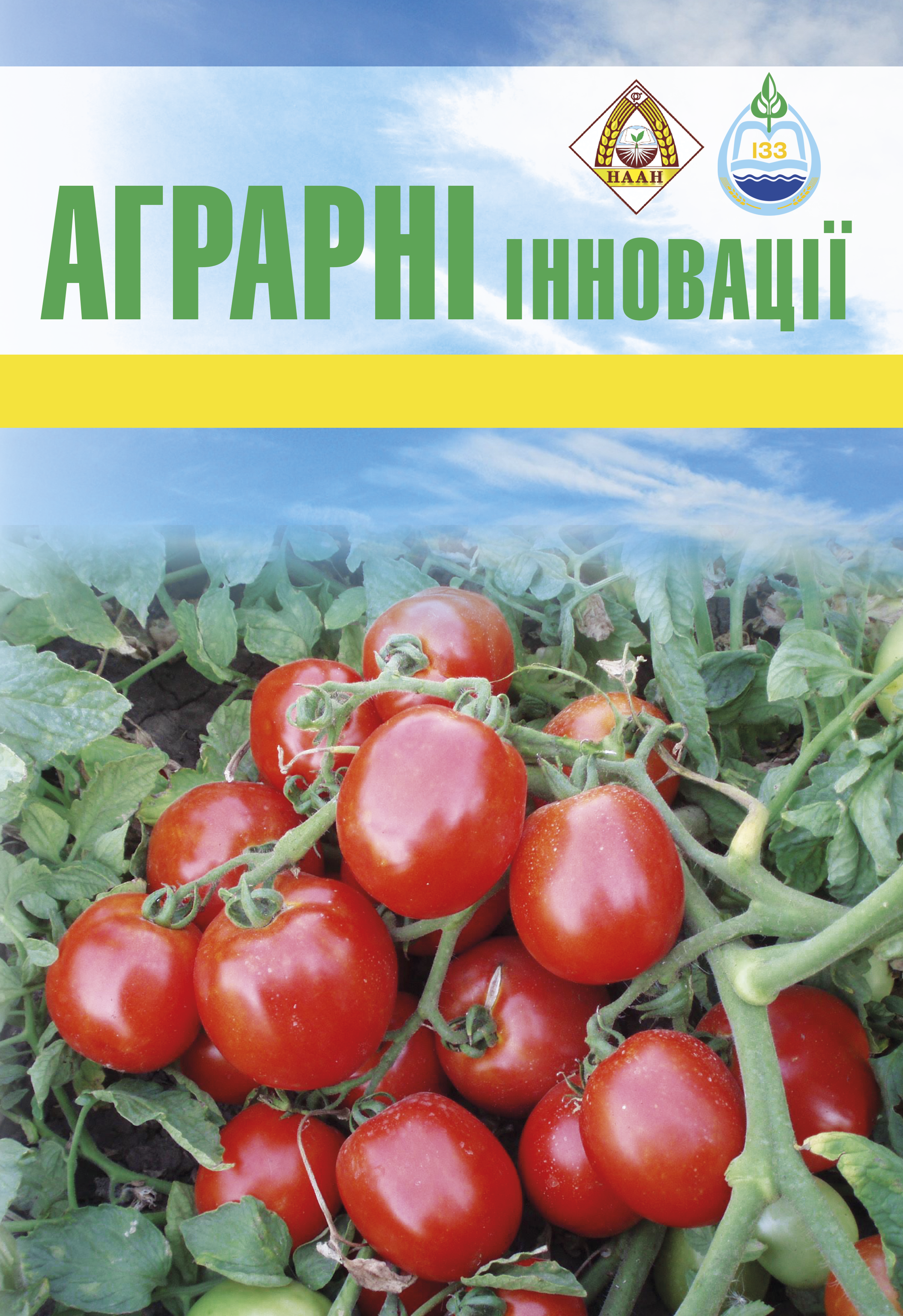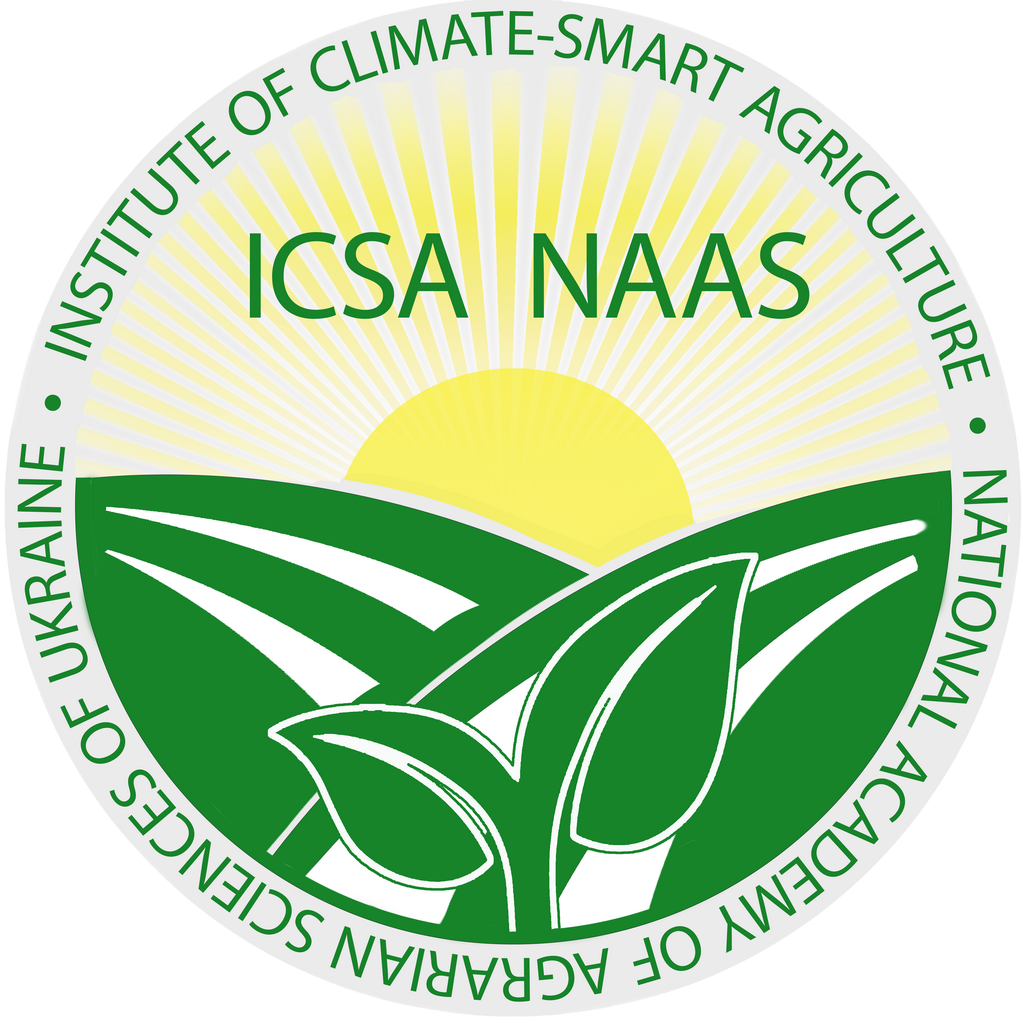Screening of potato hybrids and varieties for resistance to rust spot in tubers under the conditions of Central Polissia of Ukraine
Abstract
The article presents the results of a long-term research (2018–2024) on the resistance of potato breeding material to rust spot, conducted under challenge conditions in the breeding laboratory of the Polissia Research Department, Institute for Potato Research. The research aimed to establish the effectiveness of different hybridization methods for creating potato breeding material resistant to rust spot and to investigate the influence of weather conditions on the development of this physiological defect, in order to identify promising genotypes for further breeding. To achieve this aim, intervarietal hybrids developed through our own breeding, interspecific hybrids from the genetic resources laboratory of the Institute for Potato Research, and varieties from different maturity groups of Ukrainian breeding were utilized. Methods: field method – visual assessment of the spread and degree of disease development on potato tubers grown under challenge conditions; statistical method – analysis of the influence of weather factors on the spread and development of rust spot in potato tubers using correlation and regression analysis. The research was conducted through a comparative analysis of the resistance of intervarietal and interspecific hybrids and potato varieties to rust spot in tubers by specific year of studies, identification of promising hybrids and varieties based on the results of multi-year evaluation (average for three years), and analysis of the influence of weather factors on disease development. Research results. It was established that intervarietal hybridization is the most effective method for creating material resistant to rust spot. Intervarietal hybrids are characterized by the highest level of resistance and the least variability of this indicator. Interspecific hybrids demonstrate significant variability in resistance level depending on the year. In contrast, potato varieties are characterized by the lowest resistance, the greatest variability of this indicator, and the predominance of forms with a medium level of resistance, which is a consequence of the breeding stabilization of the trait. Analysis of the resistance of individual potato varieties revealed significant differences between them, in particular, from stable resistance in the Partner variety to high susceptibility to rust spot in the Serpanok variety, which indicates the influence of both genetic characteristics of the variety and abiotic factors on the manifestation of the physiological defect. Regression analysis (2015–2024) revealed that air temperature in August, precipitation in June and August are key factors influencing the development of rust spot in tubers. Conclusion. The research results emphasize the importance of an integrated approach to breeding methods when creating potato varieties resistant to rust spot, taking into account both genetic characteristics and the influence of abiotic factors such as air temperature and precipitation. Promising potato hybrids and varieties identified during the research are valuable breeding material for creating varieties resistant to internal physiological tuber defects.
References
2. Rady A. M., & Guyer D. E. Rapid and/or nondestructive quality evaluation methods for potatoes: a review. Computers and Electronics in Agriculture. 2015. Vol. 117. Р. 31–48. https://doi.org/10.1016/j.compag.2015.07.002
3. Chang J., Liao D., Li J., Li J., Li Z., Chen X., Song Z., & Zhang B. Calcium deficiency leads to fruit blackheart formation by disrupting glycometabolism and phenylpropanoid metabolism in wax gourd. Postharvest Biology and Technology. 2024. Vol. 211. 112851. https://doi.org/10.1016/j.postharvbio.2024.112851
4. Sowokinos J. R. Internal physiological disorders and nutritional and compositional factors that affect market quality. In D. Vreugdenhil, J. Bradshaw, C. Gebhardt, F. Govers, D. K. L. Mackerron, M. A. Taylor, & H. A. Ross (Eds.).Potato biology and biotechnology. 2007. Elsevier. https://doi.org/10.1016/B978-044451018-1/50065-8.
5. Lombardo S., Lo Monaco A., Pandino G., Parisi B., & Mauromicale G. The phenology, yield and tuber composition of ‘early’ crop potatoes: a comparison between organic and conventional cultivation systems. Renewable Agriculture and Food Systems. 2013. Vol. 28(1). Р. 50–58. doi:10.1017/S1742170511000640
6. Brazinskiene V., Asakaviciute R., Miezeliene A., Alencikiene G., Ivanauskas L., Jakstas V., … & Razukas A. Effect of farming systems on the yield, quality parameters and sensory properties of conventionally and organically grown potato (Solanum tuberosum L.) tubers. Food Chemistry. 2014. Vol. 145. Р. 903–909. https://doi.org/10.1016/j.foodchem.2013.09.011
7. Mikitzel L. Tuber Physiological Disorders. In D. A. Navarre & M. J. Pavek (Eds.). The Potato: Botany, Production and Uses. 2014. CABI, Р. 237–254. https://doi.org/10.1079/9781780642802.0237
8. Deblonde P. M. K., & Ledent J. F. Effects of moderate drought conditions on green leaf number, stem height, leaf length and tuber yield of potato cultivars. European Journal of Agronomy. 2001. Vol. 14. Р. 31–41. doi: 10.1016/s1161-0301(00)00081-2
9. Dahal K., Li X-Q., Tai H., Creelman A., & Bizimungu B. Improving potato stress tolerance and tuber yield under a climate change scenario – a current overview. Frontiers in Plant Science. 2019. Vol. 10. 563. doi: 10.3389/fpls.2019.00563
10. Yencho G. C., McCord P. H., Haynes K. G., Henninger M. R., & Clough M. E. Internal heat necrosis of potato–A review. American Journal of Potato Research. 2008. Vol. 85. Р. 69–76. https://doi.org/10.1007/s12230-008-9008-4
11. Potatoes South Africa. Physiological tuber disorders fact sheet. 2016. https://www.potatoes.co.za/wp-content/uploads/2022/09/11. -Physiological-Tuber-Disorders-Fact-Sheet-2016.pdf (Accessed February 24, 2025).
12. Nxumalo K. A., Masarirambi M. T., Mabuza M., Muziri T., & Masarirambi T. Common physiological disorders of white/Irish potato (Solanum tuberosum) tubers produced in Swaziland: A review. Journal of Agronomy and Agricultural Science. 2017. Vol. 1. 001. DOI:10.24966/AAS-8292/100001
13. Schumann M. J., Zeng Z.-B., Clough M. E., & Yencho G. C. Linkage map construction and QTL analysis for internal heat necrosis in autotetraploid potato. Theoretical and Applied Genetics. 2017. Vol. 130. Р. 2045–2056. https://doi.org/10.1007/s00122-017-2941-1
14. Pentangelo A., Raimo F., Parisi B., Mandolino G., & Pane C. Effects of highly concentrated KCl foliar spray for managing the occurrence of the internal brown spot, a physiological disorder of potato tubers. The Journal of Horticultural Science and Biotechnology. 2021. Vol. 96(4). Р. 527–537. https://doi.org/10.1080/14620316.2020.1869108
15. Gautam S., Pandey J., Scheuring D. C., Koym J. W., & Vales M. I. Genetic basis of potato tuber defects and identification of heat-tolerant clones. Plants. 2024. Vol. 13(5). 616. https://doi.org/10.3390/plants13050616
16. Zarzyńska K., & Boguszewska-Mańkowska D. Commercial quality of potato tubers of different varieties from organic and conventional production system. Agronomy. 2024. Vol. 14(4). 778. https://doi.org/10.3390/agronomy14040778
17. Palta J. P. Improving potato tuber quality and production by targeted calcium nutrition: the discovery of tuber roots leading to a new concept in potato nutrition. Potato Research. 2010. Vol. 53. Р. 267–275 https://doi.org/10.1007/s11540-010-9163-0
18. Sterrett S. B., Haynes K. G., Yencho G. C., Henninger M. R., & Vinyard B. T. 4×–2× potato clones with resistance or susceptibility to internal heat necrosis differ in tuber mineral status. Crop Science. 2006. Vol. 46. Р. 1471–1478. https://doi.org/10.2135/cropsci2005.06-0093
19. Monk L. S., McPhail D. B., Goodman B. A., & Davies H. V. An electron spin resonance investigation of internal rust spot, a physiological disorder of the potato tuber. Free Radical Research Communications 1989. Vol. 5(6). Р. 345–350. https://doi.org/10.3109/10715768909073417
20. Sterrett S. B., Henninger M. R., Lee G. S. Relationship of Internal Heat Necrosis of Potato to Time and Temperature after Planting. Journal of the American Society for Horticultural Science. 1991. Vol. 116. Iss. 4. Р. 697–700. DOI: https://doi.org/10.21273/JASHS.116.4.697
21. Sterrett S., Lee G., Henninger M., & Lentner M. Predictive Model for Onset and Development of Internal Heat Necrosis of Atlantic Potato. Journal of the American Society for Horticultural Science. 1991. Vol. 116. Iss. 4. Р. 701–705. DOI: https://doi.org/10.21273/JASHS.116.4.701
22. Raimo F., Pentangelo A., Pane C., Parisi B., & Mandolino G. Relationships Between Internal Brown Spot and Skin Roughness in Potato Tubers Under Field Conditions. Potato Research. 2018. Vol. 61. Р. 327–339. DOI: 10.1007/s11540-018-9380-5
23. Hajjar G., Quellec S., Pépin J., Challois S., Joly G., Bontemps J. D., Belin É., Prevost J., & Gorretta N. MRI investigation of internal defects in potato tubers with particular attention to rust spots induced by water stress. Postharvest Biology and Technology. 2021. Vol. 180. 111600. https://doi.org/10.1016/j.postharvbio.2021.111600
24. Ibrahim A., Grassi M., Lovati L., Bruno P., Spinelli L., Torricelli A., Rizzolo A., & Vanoli M. Non-destructive detection of potato tubers internal defects: critical insight on the use of time resolved spectroscopy. Advances in Horticultural Science. 2020. Vol. 34(1S). Р. 43–51. https://doi.org/10.13128/ahsc-7653
25. Муравйов В. О., Мельник О. В., Духіна Н. Г., Семибратська Т. В., & Урюпіна Л. М. Вирощування картоплі в умовах Східного Лісостепу України: рекомендації. Вінниця: Твори, 2020. 48 с. https://ovoch.com/assets/files/library/methodical/2020/5-verstka_muravjov_a51.pdf
26. Залізиста плямистість (іржавість бульб). Еліткартопля. [Електронний ресурс]. URL: https://www.elitkartofel.com/zalizista-plyamistist-irzhastistbulb (дата звернення: 24.02.2025).
27. Теслюк П. С., Кущенко В. С., Подгаєцький А. А., Мигловець О. П., Демкович Я. Б., Борівський А. Ф., Теслюк Л. П., Купрянов В. П. Хвороби та шкідники картоплі, заходи боротьби з ними. Київ: Ріджи, 2017. 232 с. ISBN 978-966-2544-29-9.
28. Олійник Т. М. Історія розвитку селекції картоплі на Поліській дослідній станції імені О. М. Засухіна (1914–2018). Історія науки і біографістика. 2019. Вип. 2. URL: http://nbuv.gov.ua/UJRN/INB_Title_2019_2_16
29. Бєлова, О. Д. Залозувата плямистість клубнів картоплі. Українська зональна станція картоплярства. 1932. Вип. 48. 23 с.
30. Рожалін, Л. В. Природа залізистої плямистості бульб картоплі. Праці Поліської сільськогосподарської станції. 1936, Т. 6, С. 67–76.
31. Подгаєцький А. А., Писаренко Н. В. Виділення міжсортових і міжвидових гібридів картоплі, стійких проти залізистої плямистості бульб. Вісник Сумського національного аграрного університету. Серія: «Агрономія і біологія». 2004. Вип. 12 (10). С. 23–29.
32. Писаренко Н. В., Сидорчук В. І., Гордієнко В. В. Оцінка сортів і вихідного селекційного матеріалу за стійкістю проти іржавої плямистості бульб. Проблеми аграрного виробництва на сучасному етапі і шляхи їх вирішення: матеріали міжнародної науково-практичної конференції присвяченій ювілейним датам від дня народження видатних вчених-рослинників: 130-річчю від дня народження доктора біол. наук, професора Льва Миколайовича Делоне; 120-річчю від дня народження кандидата с.-г. наук Софії Михайлівни Фріденталь (1-2 липня 2021 р.). Харків: Інститут рослинництва імені В. Я. Юр’єва НААН, 2021. С. 233–237.
33. Сидорчук В., Писаренко Н., Тактаєв Б., Собран В. Оцінка стійкості перспективного селекційного матеріалу картоплі проти основних хвороб та шкідників на природному та інфекційному фоні. Міжвідомчий тематичний науковий збірник «Картоплярство». 2022. Вип. 46. С. 163–181. https://potato-journal.com.ua/index.php/journal/article/view/13
34. Бондарчук А. А., Колтунов В. А. (Ред.). Картоплярство: методика дослідної справи. Вінниця: ТОВ «ТВОРИ», 2019. https://www.ikar.org.ua/_files/ugd/69bb4c_77462c9ea8804515b090c3254bffeada.pdf
35. Трибель С. О., та ін. Методологія оцінювання сортозразків картоплі на стійкість проти основних шкідників і збудників хвороб. Київ: Аграрна наука, 2013. 264 с.
36. Трускавецький, Р. С., Зубковська, В. В., Паламарь, Н. Ю. Вплив глейових процесів на фосфатний стан ґрунтів. Вісник аграрної науки, 2018. № 1. С. 18–24. doi.org/10.31073/agrovisnyk201801-03
37. Шувар І. Про родючість підставу потрібно дбати постійно (продовження). Агрономія сьогодні. 2011. 29 листопада. https://agro-business.com.ua/agro/ahronomiia-sohodni/item/191-pro-rodiuchist-hruntutreba-dbaty-postiino-prodovzhennia.html (дата звернення: 24.02.2025).
38. Роль фосфору при вирощуванні картоплі. Yara Україна. https://www.yara.ua/crop-nutrition/potatoes/key-facts/growth-stage/role-of-phosphate/ (дата звернення: 24.02.2025).
39. Положенець В. М., Станкевич С. В., Фурдига М. М., Немерицька, Л. В. Журавська І. А., Станкевич М. Ю. Інтегрований захист картоплі від хвороб, шкідників і бур’янів. Житомир: ПП «Рута», 2024. 428 с. URI: https://repo.btu.kharkov.ua//handle/123456789/49324






